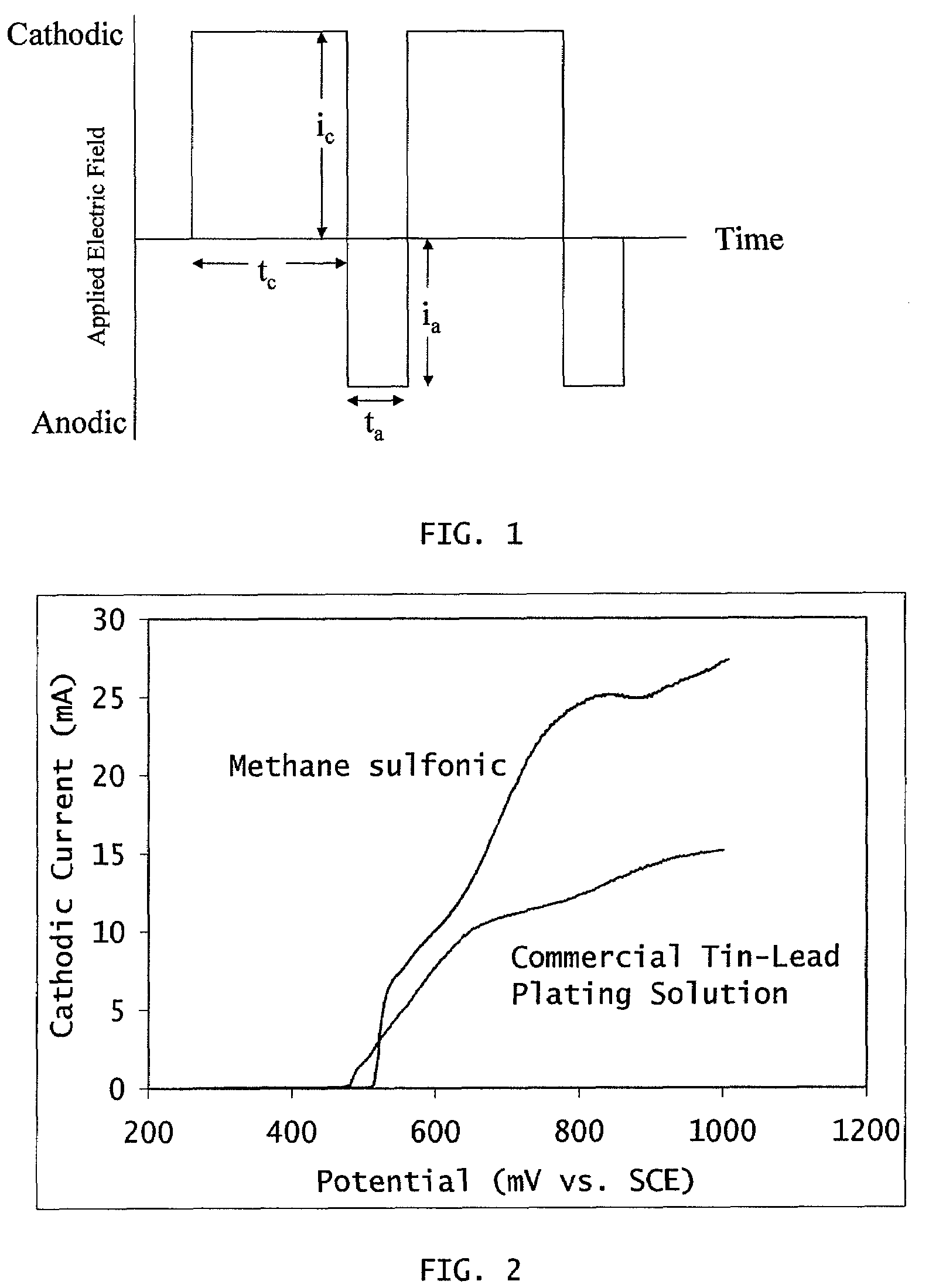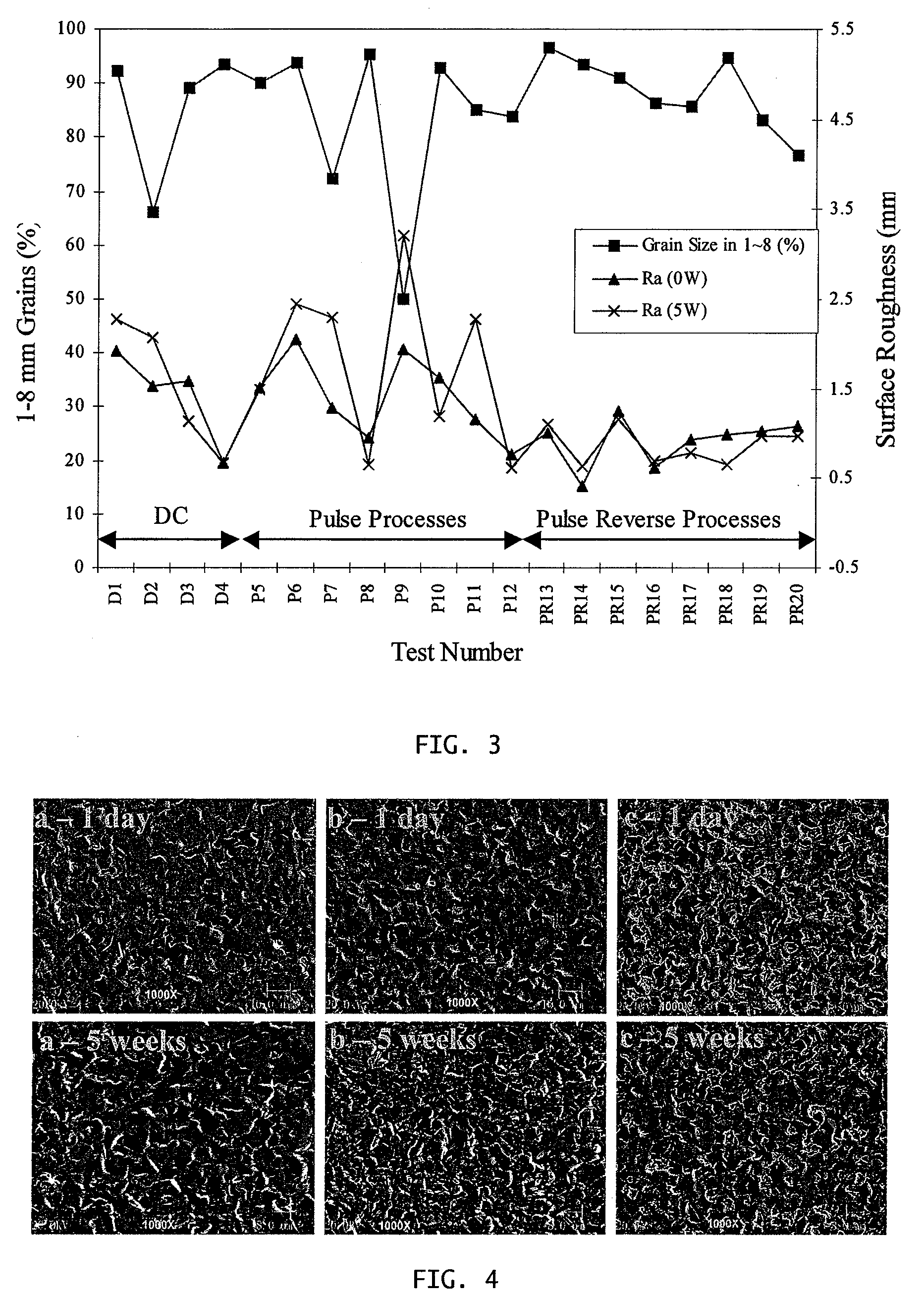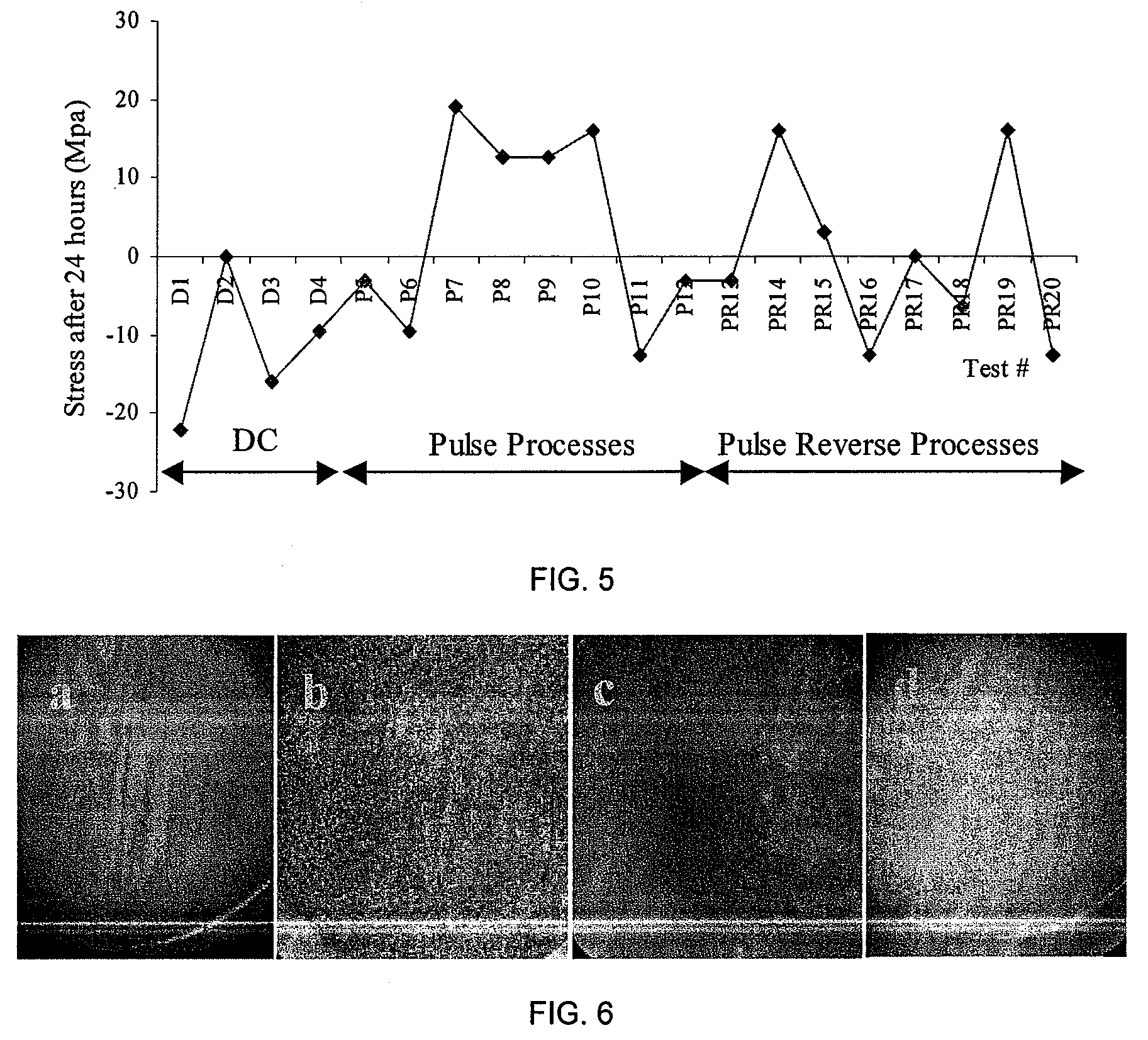Tin and tin alloy electroplating method with controlled internal stress and grain size of the resulting deposit
- Summary
- Abstract
- Description
- Claims
- Application Information
AI Technical Summary
Benefits of technology
Problems solved by technology
Method used
Image
Examples
example 1
Test D1
[0036]In the first test (D1), the rotation speed was 100 revolutions per minute and the average current density was 10 milliamperes per square centimeter. The following deposit properties were measured: 1) the surface appearance was a matte finish, 2) the process efficiency was 87 percent, 3) the average plating rate was 0.50 micrometers per minute, 4) the surface roughness 2 weeks after plating was 1.93 micrometers, 5) the surface roughness 6 weeks after plating was 2.28 micrometers, 6) the coverage of the tin deposit was not 100 percent of the total area, 7) the percentage of grains in the size range of 1 to 8 micrometers was 92.1 percent, 8) the full width half maximum (FWHM) of the x-ray diffraction curve data in the (420) plane was 0.090, 9) the full width half maximum (FWHM) of the x-ray diffraction curve data in the (411) plane was 0.091, 10) the internal stress was a compressive stress with a magnitude of 22 megapascals, and 11) after 2 and 6 weeks, no whisker growth ...
example 2
Test D2
[0037]In the second test (D2), the rotation speed was 400 revolutions per minute and the average current density was 10 milliamperes per square centimeter. The following deposit properties were measured: 1) the surface appearance was a matte finish, 2) the process efficiency was 96 percent, 3) the average plating rate was 0.68 micrometers per minute, 4) the surface roughness 2 weeks after plating was 1.54 micrometers, 5) the surface roughness 6 weeks after plating was 2.08 micrometers, 6) the coverage of the tin deposit was not 100 percent of the total area, 7) the percentage of grains in the size range of 1 to 8 micrometers was 66.2 percent, 8) the full width half maximum (FWHM) of the x-ray diffraction curve data in the (420) plane was 0.088, 9) the full width half maximum (FWHM) of the x-ray diffraction curve data in the (411) plane was 0.096, 10) there was no internal stress (zero stress), and 11) after 2 and 6 weeks, no whisker growth was observed.
example 3
Test D3
[0038]In the third test (D3), the rotation speed was 400 revolutions per minute and the average current density was 20 milliamperes per square centimeter. The following deposit properties were measured: 1) the surface appearance was a matte finish, 2) the process efficiency was 90 percent, 3) the average plating rate was 0.95 micrometers per minute, 4) the surface roughness 2 weeks after plating was 1.58 micrometers, 5) the surface roughness 6 weeks after plating was 1.14 micrometers, 6) the coverage of the tin deposit was not 100 percent of the total area, 7) the percentage of grains in the size range of 1 to 8 micrometers was 89.1 percent, 8) the full width half maximum (FWHM) of the x-ray diffraction curve data in the (420) plane was 0.084, 9) the full width half maximum (FWHM) of the x-ray diffraction curve data in the (411) plane was 0.083, 10) the internal stress was a compressive stress with a magnitude of 15.9 megapascals, and 11) after 2 and 6 weeks, no whisker growt...
PUM
| Property | Measurement | Unit |
|---|---|---|
| Fraction | aaaaa | aaaaa |
| Length | aaaaa | aaaaa |
| Time | aaaaa | aaaaa |
Abstract
Description
Claims
Application Information
 Login to View More
Login to View More - R&D
- Intellectual Property
- Life Sciences
- Materials
- Tech Scout
- Unparalleled Data Quality
- Higher Quality Content
- 60% Fewer Hallucinations
Browse by: Latest US Patents, China's latest patents, Technical Efficacy Thesaurus, Application Domain, Technology Topic, Popular Technical Reports.
© 2025 PatSnap. All rights reserved.Legal|Privacy policy|Modern Slavery Act Transparency Statement|Sitemap|About US| Contact US: help@patsnap.com



